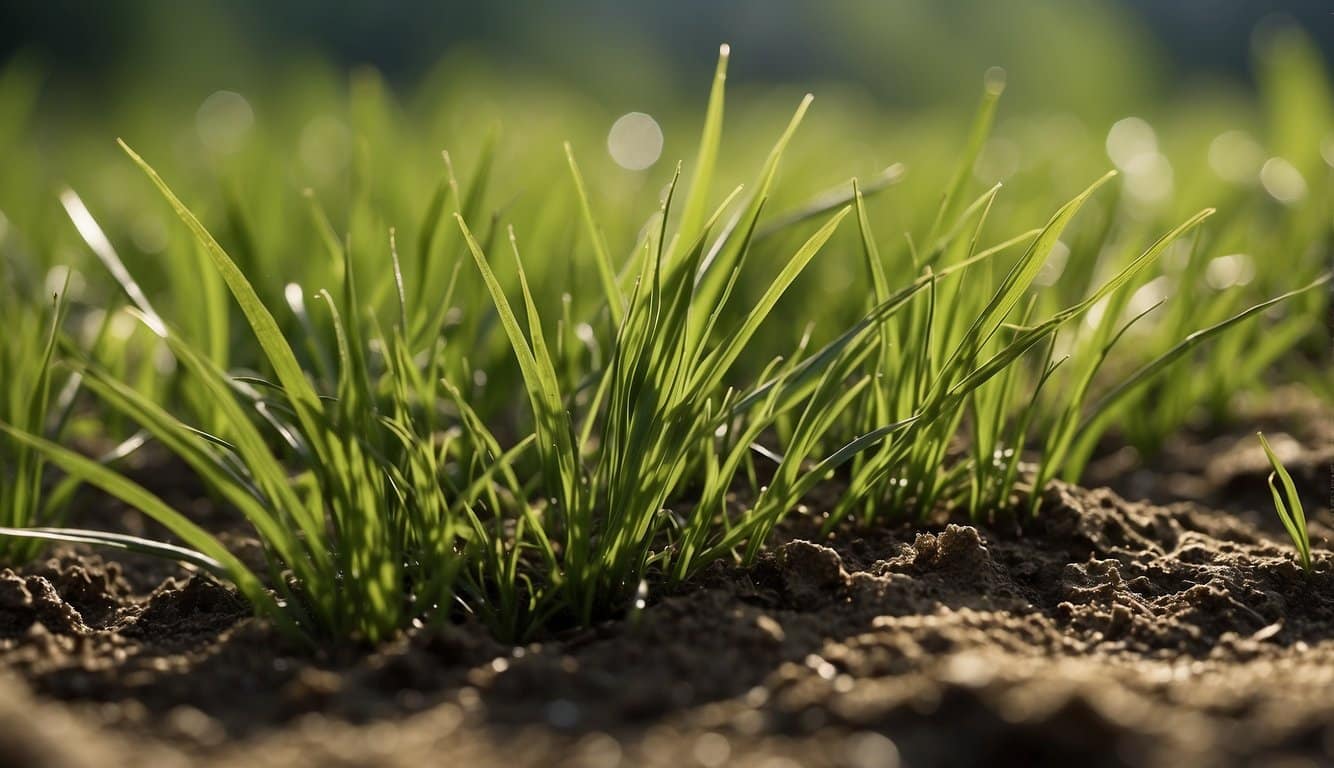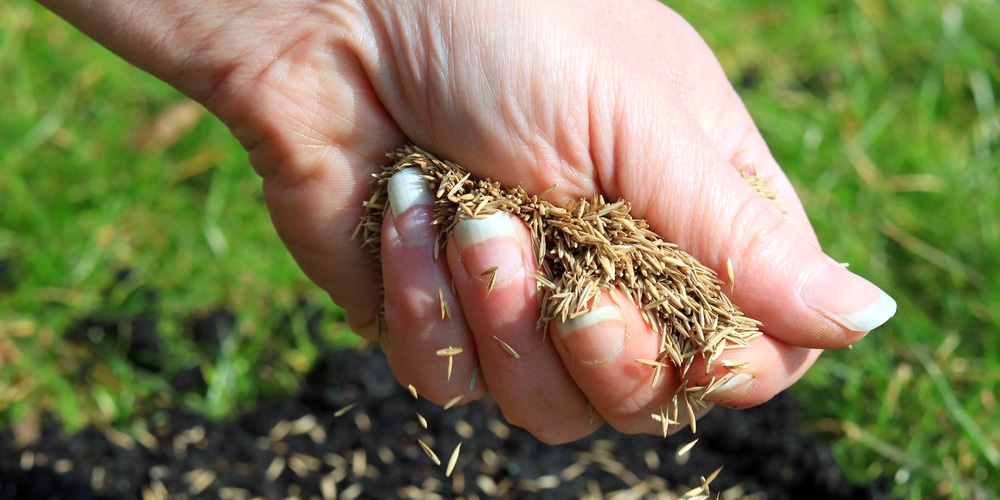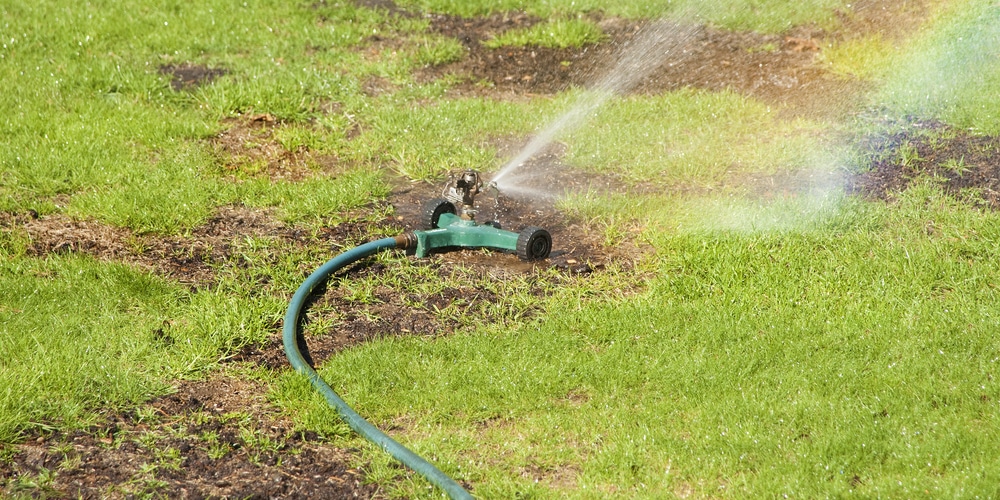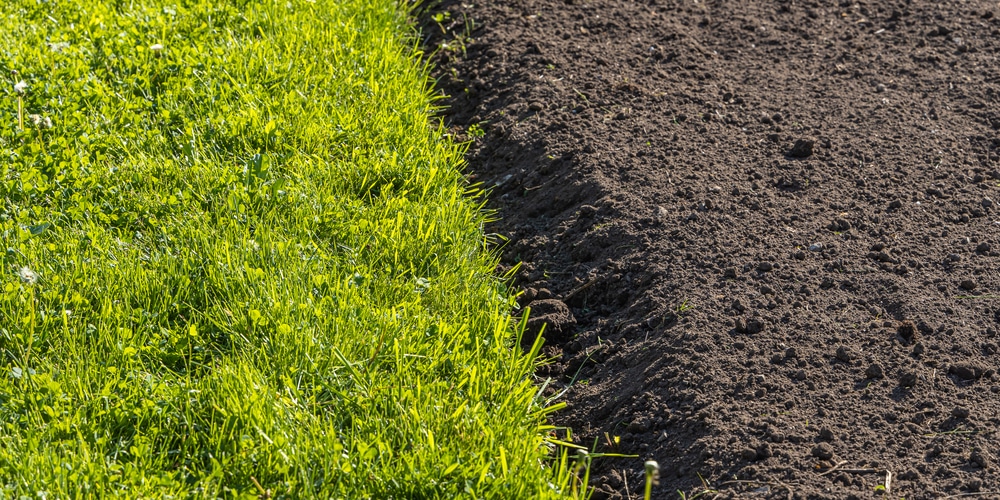| Question | When to Plant Grass in Ohio? |
|---|---|
| Answer | Spring (mid-April to early May) and early fall (mid-August to late September). |
| More Info |
|
Planting grass in Ohio requires careful consideration of the state’s varied climate zones to ensure a lush and healthy lawn.
Ohio typically experiences a cool-season climate, making it suitable for cool-season grasses like Kentucky bluegrass, perennial ryegrass, fine fescue, and tall fescue. These grasses not only thrive in Ohio’s weather conditions but also contribute to the state’s picturesque landscapes.
Understanding the state’s climate helps gardeners choose the right time and grass type for seeding.
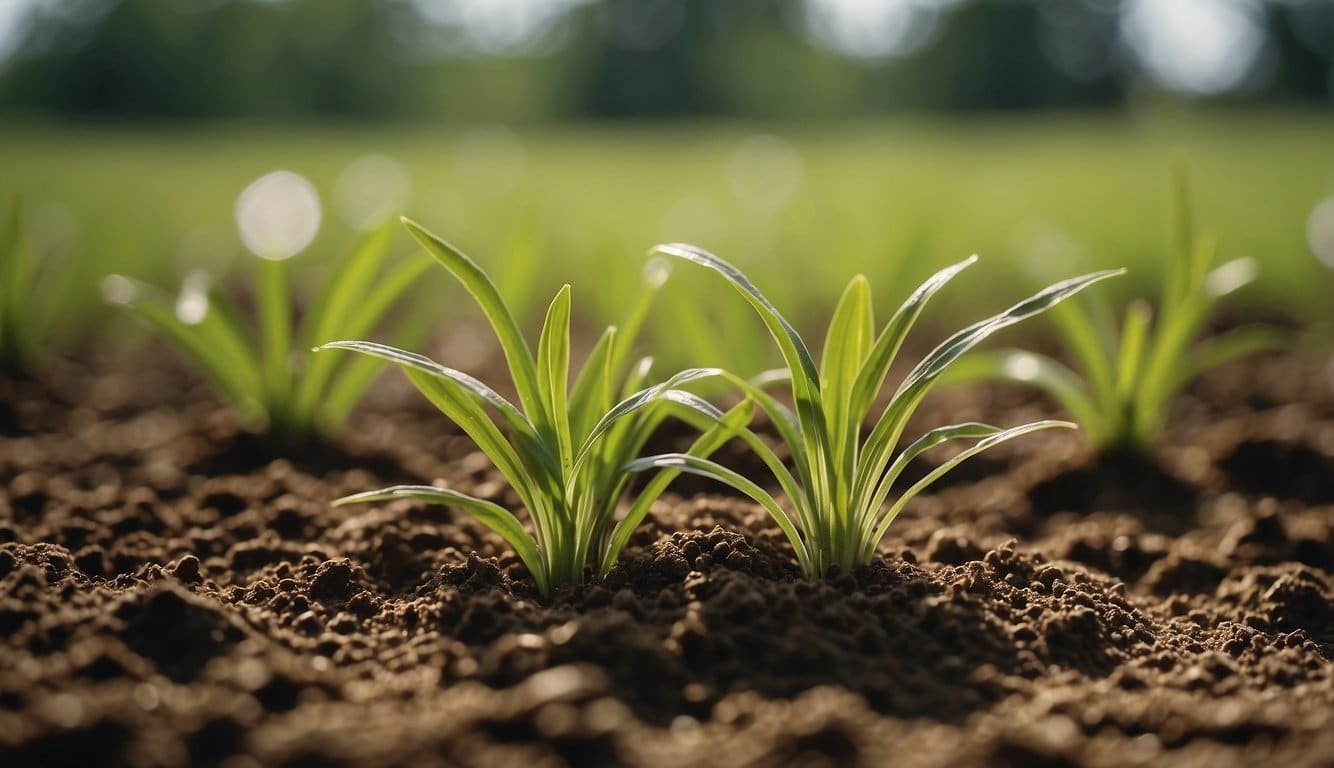
The optimal period for planting grass seed in Ohio is during the late summer and early fall, specifically from mid-August to early October.
This timing takes advantage of the moderate temperatures that favor seed germination and root development before the onset of winter.
Proper soil preparation is also a critical step in the seeding process. It includes tasks such as soil testing, amending soil nutrients, and ensuring the soil is loose and weed-free to provide an ideal seedbed.
Key Takeaways
- Ohio’s climate is best suited for cool-season grass varieties.
- Plant grass seed in late summer to early fall for best results.
- Soil preparation is crucial for successful grass seed germination.
Understanding Ohio’s Climate Zones
Ohio’s climate is predominantly categorized within the humid continental zone, but it does vary slightly across different regions due to factors such as latitude, elevation, and proximity to Lake Erie.
These variations are important when considering the optimal time for agricultural activities, such as planting grass seed.
Northern Ohio:
- This region falls into the USDA Hardiness Zones 5-6.
- Lake Erie influences the climate, providing a more temperate environment with slightly longer growing seasons.
- Winters can be harsh with considerable snowfall.
Central Ohio:
- Largely contained within Zone 6, the climate here balances both northern and southern Ohio weather patterns.
- Benefits from a moderate climate, not as severe as the north in terms of cold or the south in terms of heat.
Southern Ohio:
- Predominantly in Zone 6, while some areas extend into Zone 7.
- Apt to experience warmer temperature ranges and milder winters than the northern counterparts.
When discussing the suitable times for planting grass in Ohio, understanding these zones is vital. Zone distinctions guide gardeners towards the timing of planting to ensure the grass seeds have the best environment for germination and growth.
Key Takeaways:
- Be aware of the specific climate zone of the area in Ohio when planning to plant grass.
- Each climate zone provides its unique window of opportunity governed by temperature, soil conditions, and the risk of frost.
- Adjust planting schedules accordingly to enhance the chance of cultivation success.
Optimal Seeding Times for Ohio Lawns
The key to a thriving lawn in Ohio is to seed at the most advantageous times of the year, which are late summer and early fall.
Specifically, mid-August to early October is when soil temperatures are conducive to seed germination, usually between 55°F to 60°F.
Fall Seeding
- Late Summer to Early Fall: Best window for planting
- Soil Temperature: Ideal at 55°F to 60°F
- Time: Enough for seeds to establish before frost
Spring Seeding
- Possible: But comes with more challenges like sudden temperature changes
- Soil Temperature: Not as reliable as in fall
Grass Types for Ohio
- Cool-Season Grasses: Like Kentucky Bluegrass and Fescues
- Warm-Season Grasses: Less common due to Ohio’s climate
Seeding during rainy days in the season can also be beneficial as it reduces the need for irrigation and the soil is typically warm enough for the seeds to germinate, without the stress of the summer heat.
Gardeners should prepare the soil by clearing debris, loosening the top layer, and ensuring proper soil fertility.
Sowing should be followed by consistent moisture to encourage germination and establishment before the onset of cold weather.
Planting in the optimal window ensures that the grass has time to establish a robust root system, making it more resilient to the challenges of the Ohio climate and ready to flourish in the spring.
Preparing the Soil for Seeding
Before planting grass seed in Ohio, it’s crucial to properly prepare the soil. This foundation step sets the stage for successful germination and the future health of the lawn.
Site Cleanup
- First, clear the area of any debris, rocks, or weeds. This can be done manually or with the help of a rake. The goal is to provide a clean slate for the new seeds.
Soil Testing
- It is advisable to perform a soil test to determine its composition and pH levels.
- The soil should have a pH between 6 and 7.5, which is ideal for most grass types. If the pH is off, one might need to adjust it using lime (for acidic soil) or sulfur (for alkaline soil).
Tilling
- Next, loosen the top 2 to 3 inches of soil with a tiller or garden tools.
- Tilling enhances soil aeration, which is vital for root growth. If the soil is too compacted, grass roots may struggle to penetrate and access nutrients.
Nutrient Amendment
- Based on the soil test results, one may need to amend the soil with organic material, like compost, to improve fertility.
- This is also the stage to add any recommended soil additives, which can enhance nutrient availability to the new grass.
Leveling and Raking
- Lastly, it’s important to level the soil surface, which can be done with a rake.
- This process creates an even seedbed, reduces the chance of water pooling, and promotes uniform growth.
Seedbed Preparation
- Clearing: Remove obstructions
- Testing: Conduct a soil test
- Tilling: Loosen the soil
- Amending: Incorporate nutrients
- Leveling: Ensure an even surface
By thoroughly preparing the seeding area, one ensures that the seed has optimal contact with the soil, which is essential for germination and establishing a robust, enviable Ohio lawn.
Grass Type Selection for Ohio
When selecting grass varieties for Ohio lawns, one must consider the specific types that thrive in the state’s climate.
Ohio generally supports cool-season grasses, thanks to its Midwestern climate with cold winters and warm summers. Here are some of the top choices:
- Kentucky Bluegrass:
- Ideal for vibrant, dense lawns
- Requires full sun to partial shade
- Known for excellent cold tolerance
- Perennial Ryegrass:
- Germinates quickly, providing rapid lawn establishment
- Exhibits a lasting dark green color
- Tolerates high traffic, making it suitable for sports fields
- Fine Fescue:
- Performs well in shady areas
- Low maintenance grass with good drought resistance
- Often used in mixtures to add shade tolerance
- Tall Fescue:
- Deep-rooted, providing better heat and drought tolerance
- Maintains a good quality lawn during summer stress
- Suitable for a variety of soil types
Components of a Mixed Grass Lawn
| Grass Type | Benefit |
|---|---|
| Kentucky Bluegrass | Excellent sod formation and winter hardiness |
| Perennial Ryegrass | Speedy establishment and recovery from wear |
| Fine Fescue | Shade tolerance and low fertilizer requirement |
| Tall Fescue | Heat and drought tolerance, deep rooting for nutrient access |
Combining these grass types can result in a robust lawn that mitigates the limitations of a single grass species.
For instance, Kentucky bluegrass and perennial ryegrass can offer a lush, green appearance while fine fescue contributes shade tolerance.
Gardeners should pay attention to the blend percentages to ensure a proper balance.
It’s advised to further consider each grass type’s specific maintenance requirements to achieve a healthy, attractive lawn year-round.
Frequently Asked Questions
In Ohio, the timing of planting grass seed is crucial for establishing a healthy lawn. Below are some of the most common questions regarding the best practices for sowing grass in this region.
What is the best time of year to sow grass seed in Ohio?
The ideal period for sowing grass seed in Ohio is from late summer to early fall, typically between mid-August and mid-September. This is when soil temperatures are warm enough to encourage germination and cool air temperatures reduce the stress on new seedlings.
How late can you plant grass seed in Ohio and still expect germination?
Grass seed should be planted in Ohio no later than mid-October. This allows the seedlings enough time to establish before the harsher conditions of winter. It is important to plant early enough so that the seeds can germinate and the grass can develop strong roots.
What varieties of grass are best suited for the climate in Ohio?
Ohio lawns thrive best with cool-season grasses such as Kentucky bluegrass, perennial ryegrass, and fine and tall fescues. These varieties are adapted to the region’s climate and can withstand its cold winters and hot, humid summers.
Is it possible to successfully plant grass in Ohio during the winter months?
Planting grass seed during the winter months in Ohio is not recommended. Seedlings are unlikely to survive the freezing temperatures and lack of consistent sunlight. The best strategy for winter is to wait and sow seeds when conditions improve in late summer to early fall.
How should grass seed be planted for optimal growth in Ohio?
For optimal growth in Ohio, grass seed should be evenly spread on well-prepared soil that is loose and free of debris.
After seeding, a light raking helps cover the seed with soil, followed by adequate watering to maintain consistent moisture without oversaturation.
Are there specific considerations for planting grass seed in Ohio’s spring conditions?
If planting grass seed in spring, it’s important to wait until the threat of frost has passed and the soil has warmed sufficiently.
Spring seeding may require more frequent watering to combat higher temperatures and ensure germination.
Preemptive weed control may also be necessary, as weeds germinate vigorously in spring.
Last update on 2025-04-18 / Affiliate links / Images from Amazon Product Advertising API



